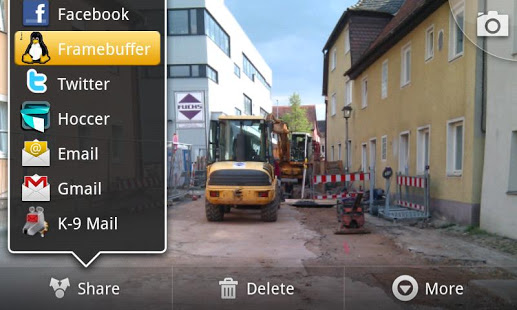

- #FRAMEBUFFER IMAGE VIEWER HOW TO#
- #FRAMEBUFFER IMAGE VIEWER PDF#
- #FRAMEBUFFER IMAGE VIEWER INSTALL#
- #FRAMEBUFFER IMAGE VIEWER FULL#
d set number of seconds of sleep between images in slideshow

o write a thumbnail with -s' dimensions to thumb_path The dimension is in pixels for sixel modes and in character
#FRAMEBUFFER IMAGE VIEWER PDF#
Space / backspace for moving through slides, +/- for zoom in and out, cursor keys to pan, S to toggle slideshow F to zoom to fit, W to zoom to width (and go top top - default for PDF pages.), j - jump to a specific frame number, shift-s to set slideshow delay, g to toggle grayscale, d to toggle dithering


#FRAMEBUFFER IMAGE VIEWER FULL#
Here too, if you mention only the filename, instead of its full path, fim will look for the file in your present working directory. Here is the command to view an image file using fim. Here is the command to view all its available options. It supports keyboard shortcuts, internal variables, aliases, EXIF tag display & orientation, and more.Īlso it is purely keyboard based application, so the user does not miss out on anything via menus or buttons that need to be clicked. It provides many personalization options and features and supports almost every graphic format. Like feh, if you provide only filename after viu command, then it will look for the file in your present working directory.įIM (FrameBuffer Improved) is a highly customizable image viewer. If you want to open an image file in viu, just enter its name after viu command. Once it is installed, run viu command without any arguments or options to view all the available options.
#FRAMEBUFFER IMAGE VIEWER INSTALL#
Next, run the following command to install viu. Open terminal and run the following command to install cargo package manager. So we will install it using Cargo package manager. It is written using Rust programming language. Viu uses two image processing protocols – iTerm and Kitty. It even allows you to display animated gifs, customize image dimensions and transparency. Viu is an open source command-line utility that allows you to view various image formats such as. For detailed documentation, just type the man command as shown. Please note, if you only specify the filename instead of full path, feh command will look for the file in your present working directory.įeh supports numerous options that allows you to avail various features that we had mentioned earlier. You can hit ‘q’ key to exit from the picture. You can view it with the following command. Let us say you have an image at /home/ubuntu/image.jpg. Here is the syntax to view image using feh. $ sudo apt-get install fehįeh provides multiple image viewing modes, keyboard shortcuts, image captions, terminal input, slideshow, montage, and even multiview. Next, run the following command to install feh. You can easily install it via terminal.įirst, install multiverse repository $ sudo apt-add-repository multiverse Here are the different tools to open image in terminal.įeh is a useful tool that you can install on your system to show images in terminal. There are many third-party tools that allow you to do this.
#FRAMEBUFFER IMAGE VIEWER HOW TO#
In this article, we will look at how to open image in terminal. Since terminal does not have a desktop or GUI it is not possible to directly view images in terminal. In such cases, sometimes you may need to display image in terminal or view images in terminal. Many system administrators who use Linux systems use terminal for pretty much everything.


 0 kommentar(er)
0 kommentar(er)
